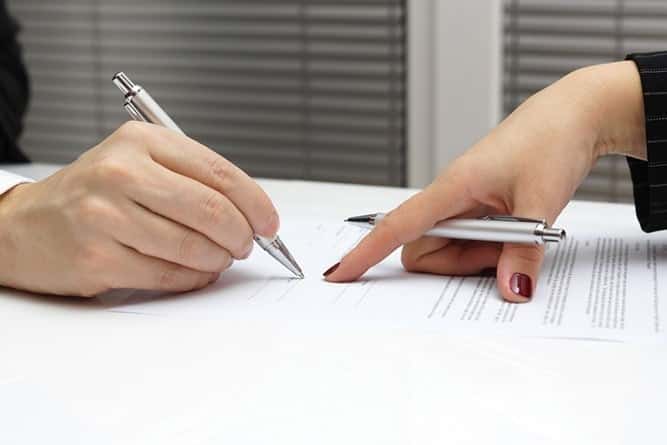When you’re hurt in a personal injury accident, some of your damages are easy to calculate. You just need to add up your out of pocket losses and demand that amount. Other types of damages may be much harder to quantify. You may have suffered mentally, and these real losses deserve compensation. But determining the dollar value of these types of losses isn’t always an easy task.
What insurance companies and courts usually do to assess your mental damages is add up your medical damages. Then, they multiply that amount by the number that they determine is appropriate in the case. The question in most cases is what multiplier to apply to arrive at the amount of non-economic damages. Here’s what you need to know about deciding on a multiplier in your personal injury case.
START YOUR FREE CONSULTATION
NO FEES UNLESS WE WIN!
Economic vs. Non-Economic Damages
In an injury case, you likely have both economic damages and non-economic damages. Economic damages are your actual, out of pocket losses due to the injury.
First and foremost, these are your medical damages, which include everything from your emergency treatment to your physical therapy to devices that help you get around. You should be able to add up your current damages and also prepare an estimate of future expenses if you’re still getting treatment.
Non-economic damages are damages that can’t be measured by an invoice or a bill. When you’re mentally traumatized from both the pain and trying to process what happened, it’s a non-economic loss.
Loss of use of a limb and regular use of your body also qualify. These are the kinds of losses that you need to find the right multiplier for to determine an approximate value of these damages.
There’s No Exact Way to Calculate Non-Economic Damages
You may be surprised to learn that Nevada law doesn’t have a strict mathematical formula for how to calculate non-economic damages. Instead, it’s up to you and the other party to agree on what’s fair, or it’s up to the jury to decide what you deserve.
The lack of a clear law on how to do it creates room for debate. Of course, when there’s room for discussion, parties on opposite sides of the lawsuit are going to disagree on how to determine the amount properly. The room for disagreement makes it essential to prepare your case and argue it the best you can.
What’s a Multiplier In a Personal Injury Case?
A typical multiplier in a personal injury case is anything from 1.5 times the amount of medical damages to 5 or more times the amount of economic damages.
For example, consider that you have been hurt in a personal injury accident and your medical bills are $10,000. You use a multiplier of 1.5 to arrive at non-economic damages. In that case, you would ask for an additional $15,000 in damages for a total of $25,000 in your case.
If you were to use a multiplier of 5 for the same case, you would ask for $50,000 in non-economic damages if you had $10,000 in damages. The big question is knowing what multiplier to apply. That depends on the exact circumstances of the case. Keep in mind that multipliers on the high end are rare.
Lost Wages Are Not a Factor
When you’re applying a multiplier to your economic damages, lost wages aren’t included. You add up your medical bills and apply the multiplier. Then you add your lost wages to arrive at a total.
For example, if your medical bills are $50,000, your lost wages are $10,000, and you apply a multiplier of 1.5, you multiply $50,000 by 1.5 to arrive at $75,000 and then add $10,000 more for lost wages. In that case, the total value of the claim is $50,000 + $75,000 + $10,000 = $135,000.
What Factors Justify a High Multiplier?
Determining the multiplier depends on the strength of your case. When you have an incredibly strong case with severe, lifelong injuries, the multiplier should be on the higher side.
If there are questions about the other side’s liability or your injuries are not long lasting, you may be closer to a 1.5 multiplier. You, the other party, and the court can answer the following questions to determine the strength of your case.
- Is the other side clearly 100 percent at fault?
- Do you have iron-clad proof of your injuries?
- Are there any questions about the cause of your injuries?
- Will your injuries last a lifetime?
- Do you have disfigurement?
- Are there doctors available to verify your injuries?
- Do the injuries disrupt your daily life?
- Is your family suffering because of your injuries?
- Are your injuries the type that cause stress and worry about future problems?
- Do your injuries cause discomfort, weakness or limited movement?
- Is there a way to make the most of the negotiations?
Because there’s no bright line test for determining your non-economic damages, a lot of the success in your case comes down to the art of negotiation. Insurance companies and other parties want to manage their risk. If they think you have a strong case and you’re likely to win at trial, they’re more likely to pay you a higher amount to settle the case before trial.
Your Demand Letter

You can write a demand letter to the insurance company. A demand letter tells the insurance company what kind of settlement offer you’re looking for and why. Even though it’s not a document you file in court, it’s important to get this letter right to encourage the other side to pay you fairly. You need to comprehensively prepare your evidence to have the right things to say an effective letter.
Call (702) 382-0000 For a Free Consultation
Work With an Attorney
An experienced personal injury lawyer can help you create realistic expectations about your case. Then, they can help you put your plan into action. From gathering evidence of your injuries to carefully drafting a demand letter, the right attorney can help you maximize your claim.
Having the right lawyer on your side can help you understand the legal process and use it to your fullest advantage to get justice in your case. It’s important to decide on the correct multiplier in your case to get the maximum amount of compensation possible for your losses. Working with an expert Las Vegas or Summerlin personal injury lawyer can ensure you have everything you need to present a solid case and get the compensation you need to make a full recovery.
Areas We Service in Las Vegas, Nevada
Las Vegas Strip | Henderson | Anthem | Summerlin | Paradise | Spring Valley | North Las Vegas | Summerlin North | Summerlin South | Sunrise Manor | Nellis AFB | Desert Shores | Downtown South | Charleston | Richfield | Crestwood | Angel Park Ranch | Queensridge | Casa Grande Pines | Winchester | West Las Vegas | Green Valley North | Lake Las Vegas | Sun City Summerlin | La Madre Foothills | Tule Springs | Mac Donald Highlands | Green Valley Ranch
Adam S. Kutner reviews and testimonials
“I needed an attorney because I couldn’t deal with the accident on my own, so I needed someone else’s opinion about my accident.
Well I heard about Adam Kutner through an associate of mine and I chose to seek him because I heard of him before also, so I thought he would be the best option for me.
I was very happy with my settlement and it came quicker than I thought, in just a couple months I received a check in the mail.
When I recommend Adam Kutner I would tell them that the settlement comes very quickly, and he is very helpful with transportation and whatever else you may need.”
– Deborah Banks. 5/5 Stars
START YOUR FREE CONSULTATION
NO FEES UNLESS WE WIN!
SE HABLA ESPAÑOL
Call Now! Free Consultation!

Adam S. Kutner
PERSONAL INJURY LAWYER
With more than 34 years of experience fighting for victims of personal injury in the Las Vegas Valley, attorney Adam S. Kutner knows his way around the Nevada court system and how to get clients their settlement promptly and trouble-free.












